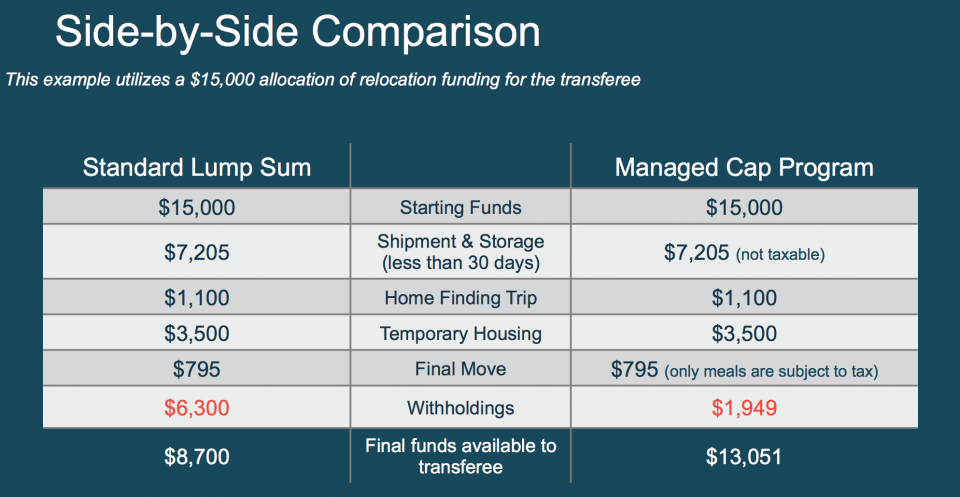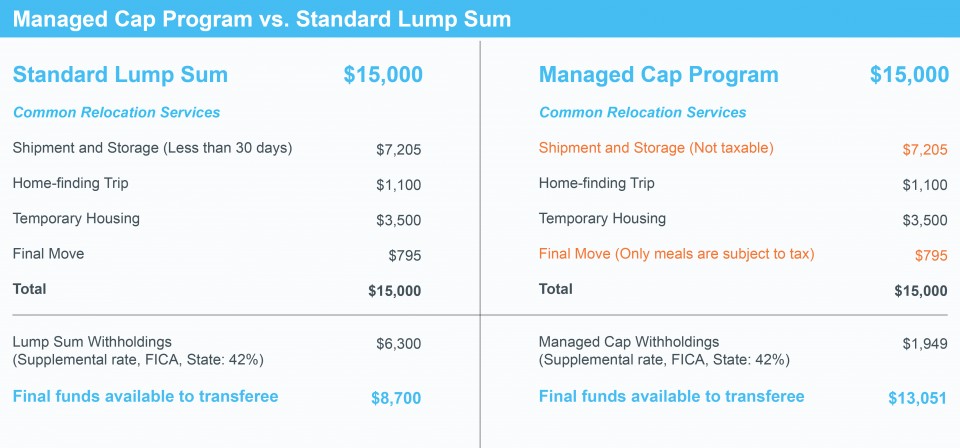Learn why it is essential for employees to utilize every penny possible in a lump sum relocation policy
What is a Lump Sum Relocation Policy?
A lump sum relocation package is a fixed sum of money employers provide to employees being transferred or newly hired. This money is given in place of relocation benefits like assistance with moving household goods, training in culture and language, or help finding a new home. Employers anticipate employees will use the lump sum payment to handle their relocation process.
Employers with employees who have recently graduated from college, individuals who contribute to the company, or those who are new to their careers may be the most suitable recipients for relocation packages that involve a lump sum payment. These workers typically rent their homes and have only a few belongings to relocate. Furthermore, they only sometimes demand substantial investments in talent acquisition since they are vying for positions at a lower level.
When it comes to companies hiring new employees or transferring them to higher positions, it is considered the best practice to offer a variety of advantages. Individuals at more elevated levels often necessitate a substantial investment in recruiting skilled individuals. Providing benefits that aid in successful relocations also leads to increased employee contentment.
Avoiding Risks with Lump Sum Packages
By offering lump sum packages versus a comprehensive relocation package, you may be putting your employees and your business at risk, cutting costs at the expense of employee satisfaction, loyalty, and productivity.
Firstly, it is common for employers to need more money in their lump sum compensation packages to fully cover the costs of relocating their employees. Even if employees can negotiate a higher lump sum amount, they still have to personally pay for relocation expenses, such as storage and labor, to unload their belongings. This is a frequently encountered situation for employees relocating with lump sum packages.
In most cases, employees relocating with a lump sum package see the financial amount as a bonus and money to move with. The most straightforward example is employees might try to use a local moving company to save some of that cash instead of using a vetted van line company provided by their relocation management company.
While it seems incredible that the employee can pocket the saved cash, much can go wrong in the relocation process. Using an unorganized household goods shipping provider that cannot handle a rushed family move can cause many more issues than solutions.
What Advantages Do Lump Sum Mobility Policies Offer?
Lump sum relocation packages offer benefits in streamlining the process for employers. The primary advantage is employers and their mobility managers face fewer complexities when providing relocation assistance. Supporting employees during their relocation is simplified to merely addressing inquiries regarding the availability of the lump sum funds.
Employers can also make things easier by simplifying their budgeting and forecasting processes. Instead of spending time and effort trying to figure out the exact costs of hiring or transferring employees, they can use a standard number that applies to all tiers of their relocation program.
GMS Is Here to Help
The corporate relocation specialists at Global Mobility Solutions (GMS) have assisted numerous clients in developing relocation policies that effectively attract and retain skilled individuals. With our expertise, we can help your company by offering exceptional relocation packages, ensuring a positive experience for transferees and new employees.
GMS became the initial relocation corporation to register as a .com officially. Additionally, they developed the inaugural online interactive instruments and calculators, which brought about a complete transformation in the relocation sector. GMS continues leading the industry by being the forerunner in innovative and technological solutions through their exclusive MyRelocation™ technology platform.
Contact our specialists to explore how your organization can utilize one-time relocation packages for new employees and transferees.
We're Here to Help! Request a Courtesy Consultation
Are you ready to talk to a Mobility Pro? Learn how GMS can optimize your mobility program, enhance your policies to meet today’s unique challenges, receive an in-depth industry benchmark, or simply ask us a question. Your Mobility Pro will be in touch within 1 business day for a no-pressure, courtesy consultation.









